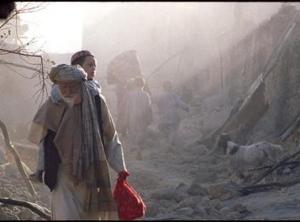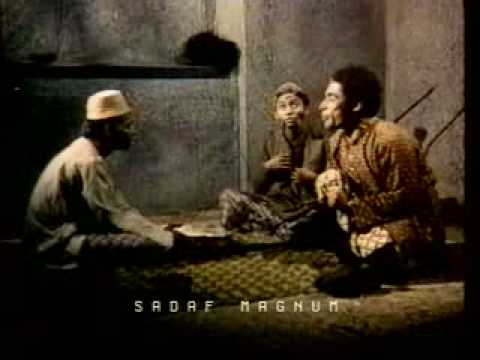Colour films in South Asia
Readers can send additional information, corrections, photographs and even on their online archival encyclopædia only after its formal launch. |
Contents[hide] |
Colour films worldwide
La Vie et la passion de Jésus Christ (aka ‘The Passion Play ‘and ‘Vie et Passion du Christ’) (France, 1903), was the world’s first colour (Pathéchrome) film.
The world’s second colour (Kinemacolor) film was shot in South Asia---‘With Our King and Queen Through India’ (aka The Durbar at Delh) (UK, 1912). This was a six-hour documentary about the Delhi Durbar. Kinemacolor was a two-colour system.
‘The World, the Flesh and the Devil’ (UK, 1914/ Kinemacolor) was the world’s first narrative feature in natural colour.
Going by the ‘List of early color feature films’ on Wikipedia, it is seen that between 1903 and 1935—around when Indian cinema entered the colour era—colour films had been made, in chronological order, in France, the UK, the USA, Italy and Germany. About the first Soviet/ Russian colour film, all that a Google search yields is that it was made ‘in the 1930s.’ To its credit, the Soviet film industry independently developed a three-colour system, patented by Pavel Mershin, which was used widely in the late 1930s. Intellectbooks
The first Chinese colour film, Fei Mu’s ‘Remorse at Death,’ was released in 1948; and the first Japanese colour film, Keisuke Kinoshita’s ‘Carmen Comes Home,’ in 1951.
Thus, arguably, South Asia was the sixth region to have produced a colour film; at most seventh, if firmer dates about the first Soviet colour film indicate otherwise.
Afghanistan
Afghanistan has been making colour films since the late 1960s, notably These include Akharin Arezo (Last Wishes), Hamaasa e Ishg (An Epic of Love), Faraar (The absconder), Khakestar (Ash), Paranda Mohajer (Migratory Birds) and Saboor Sarbaaz (صبور سرباز Saboor Soldier).
Bangladesh and Pakistan
In 1964 when Zahir Raihan‘s full-length (tamaam rangeen) colour opus Sangam (Urdu) was released, Pakistan and Bangladesh were one nation state, and Bangladesh was called East Pakistan. Sangam can, therefore, be considered the first colour film of both countries because it was produced in East Pakistan. (By the same logic both nations should claim Kisan Kanya as their first colour film.)
Though only a few scenes of Eid Mubarak (1965) were in colour, it is sometimes referred to as the first colour film of (West) Pakistan.
Naila, 1965, was the next entirely-in-colour film. In Pakistan colour became the norm in the early-seventies.
See also CinemaScope and 70mm films
India
Kisan Kanya (lit: the peasant girl; 1937/ Dir: Moti B. Gidvani; prod. Ardeshir Irani) was arguably the first colour film of India and of South Asia.
Jean Renoir's Le Fleuve (The River) (1951/ France) was the first Technicolor film shot wholly in India or any part of South Asia. However, it was an English-language film from France and not an indigenous film.
See Colour films in South Asia: 3-- Hindi-Urdu films in colour
Myanmar
A colour documentary film on the "Sixth Buddhist Synonage" is considered the first colour film of the Myanmar cinema industry.
The first colour feature film "Chit Khai tar ahman par bei" (It's true we have loved) was produced by Yangon Film Company in 1958. This makes Burma/ Myanmar a pioneer among South Asian films because its first colour feature film was released before any other South Asian country had made a colour film (except India’s Hindi-Urdu industry, only two year after India’s gigantic Tamil industry, and five years before the massive Telugu industry, on most counts India's second biggest).
(No photograph available. Can any reader help? )
Nepal
Kumari (the first Eastman color Nepali film) was released in 1978
(No photograph available. Can any reader help?)
Pakistan
Pakistani Punjabi
The first ever Punjabi film to be made in colour in Pakistan was Panj Darya. It was released in the year 1968.
Sri Lanka
Henry Chandrawansa the producer and director of the first Sri Lankan Tamil film Samuthayam (Society) (1962), was a Sinhalese. Such was Sinhala-Tamil brotherhood in those days that the producer of the first Sinhala film was a Tamilian. Samuthayam was in 16 mm and in colour, according to one source in Technicolor. (No photograph available. Can any reader help? )
Ranmuthu Duwa (Island of Treasures) (Sinhalese/ 1962) was the first full-length colour film language to be produced in Sri Lanka.
See also
CinemaScope films in Bangladesh, India, Nepal, Pakistan, Sri Lanka I.e. the first part of this article
70mm films in India/ South Asia
Cinerama theatres in India, Pakistan, Sri Lanka
Colour films in South Asia







